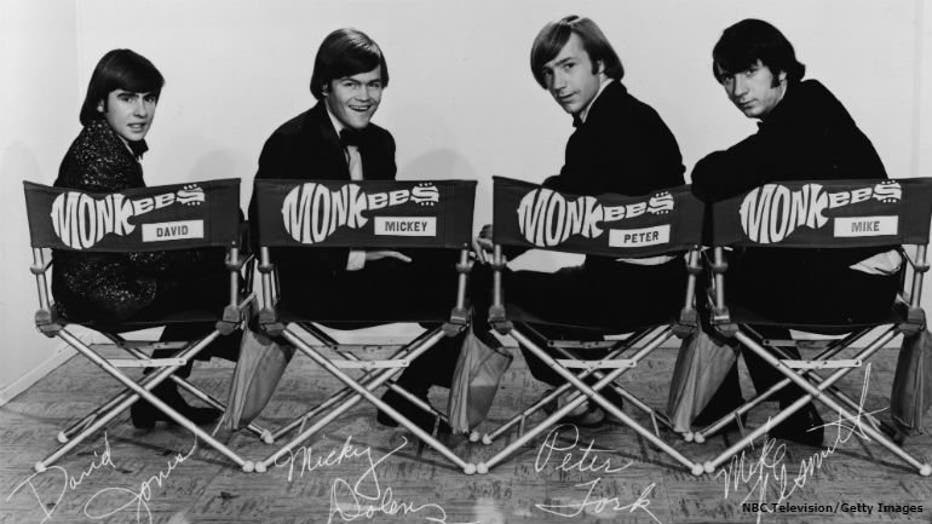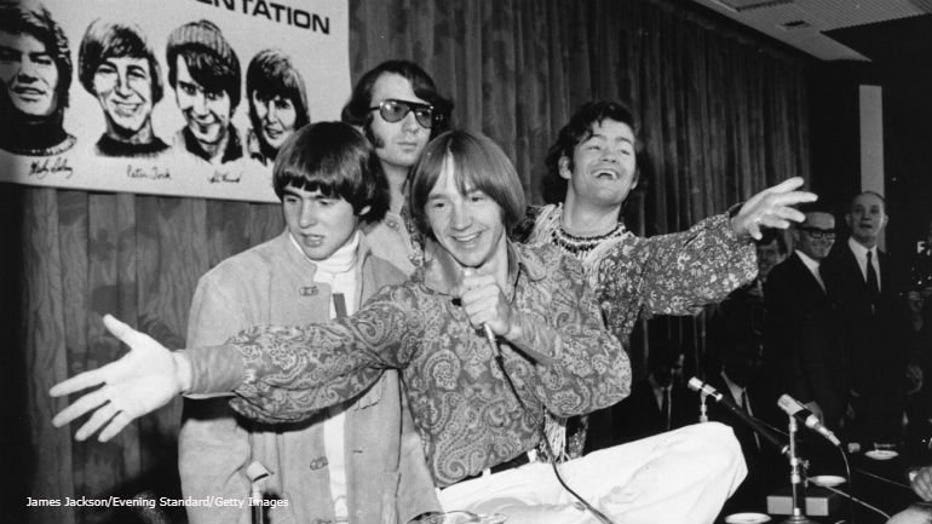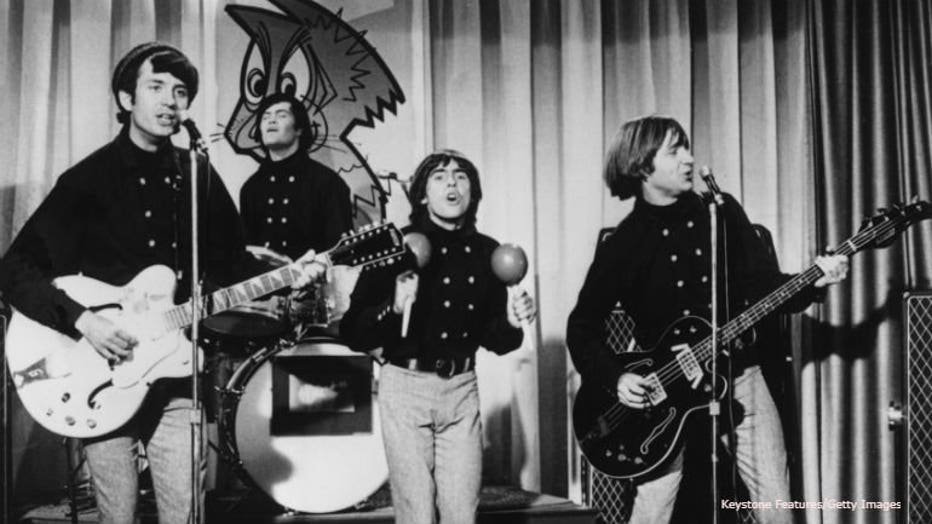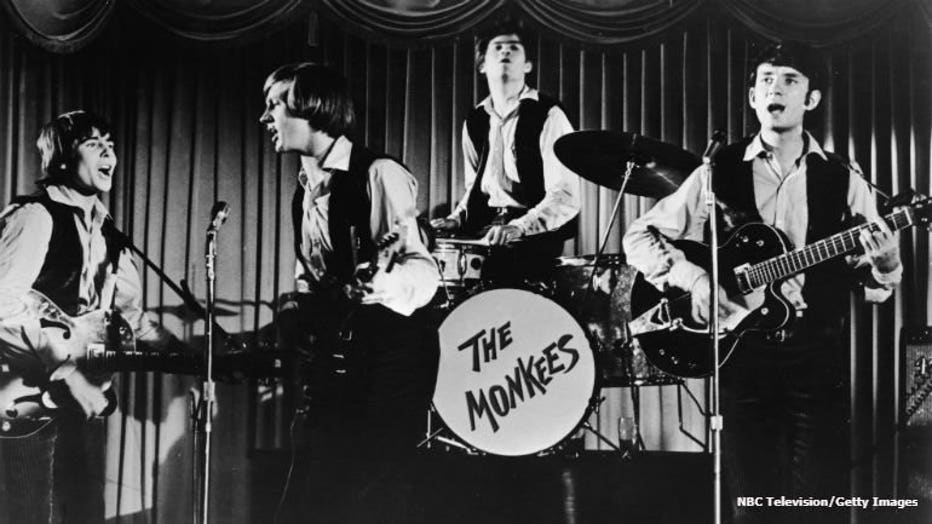Peter Tork, Monkees' lovable bass-guitar player, dead at 77
LOS ANGELES — Peter Tork, a talented singer-songwriter and instrumentalist whose musical skills were often overshadowed by his role as the goofy, lovable bass guitarist in the made-for-television rock band The Monkees, has died at age 77.
Tork's son Ivan Iannoli told The Associated Press his father died Thursday morning at the family home in Connecticut of complications from adinoid cystic carcinoma, a rare cancer of the salivary glands. He had battled the disease since 2009.


NEW YORK, NY - JUNE 01: Mickey Dolenz (L) and Peter Tork of The Monkees perform live on stage at Town Hall on June 1, 2016 in New York City. (Photo by Matthew Eisman/Getty Images)
"Peter's energy, intelligence, silliness, and curiosity were traits that for decades brought laughter and enjoyment to millions, including those of us closest to him," his son said in a statement. "Those traits also equipped him well to take on cancer, a condition he met like everything else in his life, with unwavering humor and courage."
Tork, who was often hailed by the other Monkees as the band's best musician, had studied music since childhood. He was accomplished on guitar, bass guitar, keyboards, banjo and other instruments. Michael Nesmith, the Monkees' lead guitarist, said Tork was the better of the two. Tork said he played bass because none of the others wanted to.

Promotional portrait of popular music and television group the Monkees, dressing in tuxedos and they as they sit in folding chair and look over their shoulders, early 1970s. From left, British musician and actor Davy Jones, and American musician and
He had been playing in small clubs in Los Angeles when a friend and fellow musician, Steven Stills, told him TV casting directors were looking for "four insane boys" to play members of a struggling rock band.
Stills, a member of the legendary rock bands Buffalo Springfield and Crosby, Stills, Nash and Young, reportedly told Tork he'd auditioned and was rejected because his teeth were ugly. He thought the handsome Tork might fare better.

29th June 1967: Top American pop group the Monkees, originally formed to play the part of a pop group for a comedy television series, enliven a press conference in England. (Photo by James Jackson/Evening Standard/Getty Images)

2nd February 1967: American pop group The Monkees. Left to right are Mike Nesmith, Micky Dolenz, Davy Jones and Peter Tork. (Photo by Keystone Features/Getty Images)
When the show debuted in September 1966 Tork and fellow band members Nesmith, Micky Dolenz and David Jones became overnight teen idols.
Nesmith was the serious Monkee, Jones was the cute one and Dolenz the zany one.
Tork said he adopted his "dummy" persona from the way he'd get audiences at Greenwich Village folk clubs to engage with him in the early 1960s.

Television still shows the popular music and television group the Monkees as they perform onstage in an episode of their self-titled tv show, late 1960s. From left, Davy Jones, Peter Tork, Mickey Dolenz (on drums), and Michael Nesmith. (Photo by NBC
He knew only one member of the Monkees before the show's debut, Nesmith who had been running "Hoot Nights" at the Troubadour nightclub in Los Angeles where Tork would occasionally perform.
"As I write this my tears are awash, and my heart is broken," Nesmith posted on his Facebook page Thursday. "I have said this before -- and now it seems even more apt -- the reason we called it a band is because it was where we all went to play."
During its two-year run the show would win an Emmy for outstanding comedy series and the group itself would land seven songs in Billboard's Top 10. Three, "I'm a Believer," ''Daydream Believer" and "Last Train to Clarksville," would reach No. 1.
Initially, the Monkees was a band whose members didn't play their instruments or write many of their songs. That was something that infuriated both Tork and Nesmith.
In later years, Tork would tell of going to an early recording session, only to be told dismissively that he wasn't needed, that session musicians were laying down the musical tracks and all the Monkees were needed for was the vocals.
"I was a hired hand, and I didn't quite know that, and I didn't quite get it," he told The Associated Press in 2000. "I had fantasies of being more important than it turns out I was."
Eventually he and Nesmith wrested control of the band's musical fate from Don Kirshner, who had been brought in as the show's music producer. By the group's third album, "Headquarters," the Monkees were playing their instruments and had even performed live in Hawaii.
After the show concluded in 1968 the band went on a lengthy concert tour that at one point included Jimi Hendrix as the opening act.
Creative differences led Tork to leave soon after the group's 1968 movie and album "Head."
For several years he struggled financially and creatively, working for a time as a waiter and a schoolteacher.
By the mid-1980s, thanks to TV reruns and album reissues, the Monkees gained a new, younger following, and Tork rejoined the others for reunion tours. All four produced a new album, "Justus," in 1996 featuring them on all of the instrumentals and including songs they had written.
In the 1990s Tork also formed the group Shoe Suede Blues and toured and recorded frequently.
Later albums included the solo work "Stranger Things Have Happened" and the Shoe Suede Blues albums "Cambria Hotel," ''Step By Step" and Relax Your Mind."
Tork begged off a Monkees reunion tour with Nesmith and Dolenz just last year to finish "Relax Your Mind." Jones died in 2012.

